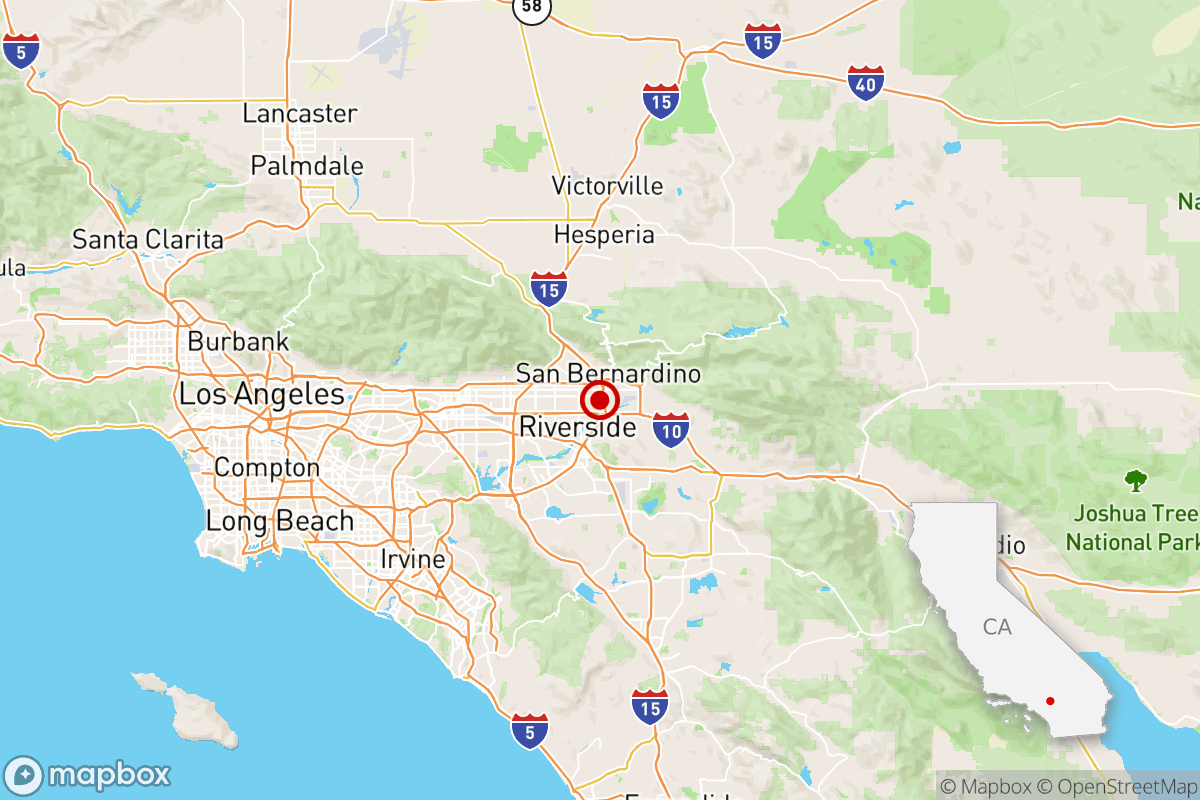Magnitude 4.2 earthquake felt across Southern California

- Share via
A magnitude 4.2 earthquake shook a wide swath of Southern California on Wednesday night.
The earthquake, centered in San Bernardino, struck at 7:43 p.m. and resulted in light shaking across the Inland Empire, including in Riverside, Fontana, Rialto, Rancho Cucamonga, Moreno Valley and Redlands, according to the U.S. Geological Survey.
Light shaking is defined by the Modified Mercalli Intensity Scale as feeling like a heavy truck struck a building.
Colton got a shaking, at about a mile from the quake’s epicenter. Police, however, had not “received a single call” for aid as of about 9 p.m., Sgt. Mike Farcas told The Times. The San Bernardino County Sheriff’s Department and police in Rialto, located about two miles from the quake’s center, echoed that statement.
Weaker shaking was felt across the region, including in Los Angeles, Long Beach and Orange County. Residents said on social media shaking was felt in Ontario, Yorba Linda and downtown Los Angeles. A resident in Rowland Heights said she felt three seconds of shaking, as if she were on a boat with waves moving rapidly.
The epicenter was 1.5 miles southwest of downtown San Bernardino and half a mile north of the San Bernardino Depot train station. The quake began just east of the mapped traces of the San Jacinto fault, one of the region’s most active and potentially dangerous fault lines.
The San Jacinto fault spans about 130 miles and runs from the Cajon Pass in San Bernardino County southeast toward the Mexican border. The San Jacinto fault is one that worries earthquake scientists because it cuts into the middle of the Inland Empire, through cities such as San Bernardino, Colton, Moreno Valley, Redlands, Loma Linda, Hemet and San Jacinto, as well as near Riverside, Rialto and Fontana.
The Inland Empire is also particularly vulnerable to earthquakes because of a lack of seismic retrofitting. A Times investigation published in 2018 said there were hundreds of old brick buildings in more than a dozen cities in the Inland Empire, including Riverside, Pomona and San Bernardino, that have been marked as dangerous but remained unretrofitted despite decades of warnings.
On social media, seismologist Lucy Jones said the depth of Wednesday’s earthquake — more than nine miles — was “pretty deep.” The latest quake was about 15 miles southeast of one that shook the area on Jan. 5, when a magnitude 4.2 quake jolted close to the remote community of Lytle Creek in the San Gabriel Mountains of San Bernardino County.
“The two quakes are probably on the same fault, but they are far enough apart in both time and space to not have an obvious correlation,” Jones wrote on social media.
Southern California’s first earthquake of at least magnitude 4 this year occurred on New Year’s Day, off the Los Angeles County coast. That magnitude 4.1 earthquake was centered about 10 miles southwest of San Pedro and 11 miles southeast of Rancho Palos Verdes.
An average of 25 earthquakes with magnitudes of 4.0 to 5.0 occur per year in California and Nevada, according to a recent three-year data sample.
Did you feel this earthquake? Consider reporting what you felt to the USGS.
Find out what to do before, and during, an earthquake near you by signing up for our Unshaken newsletter, which breaks down emergency preparedness into bite-sized steps over six weeks. Learn more about earthquake kits, which apps you need, Lucy Jones’ most important advice and more at latimes.com/Unshaken.
An earlier version of this story was automatically generated by Quakebot, a computer application that monitors the latest earthquakes detected by the USGS. A Times editor reviewed the post before it was published. If you’re interested in learning more about the system, visit our list of frequently asked questions.
More to Read
Sign up for Essential California
The most important California stories and recommendations in your inbox every morning.
You may occasionally receive promotional content from the Los Angeles Times.















